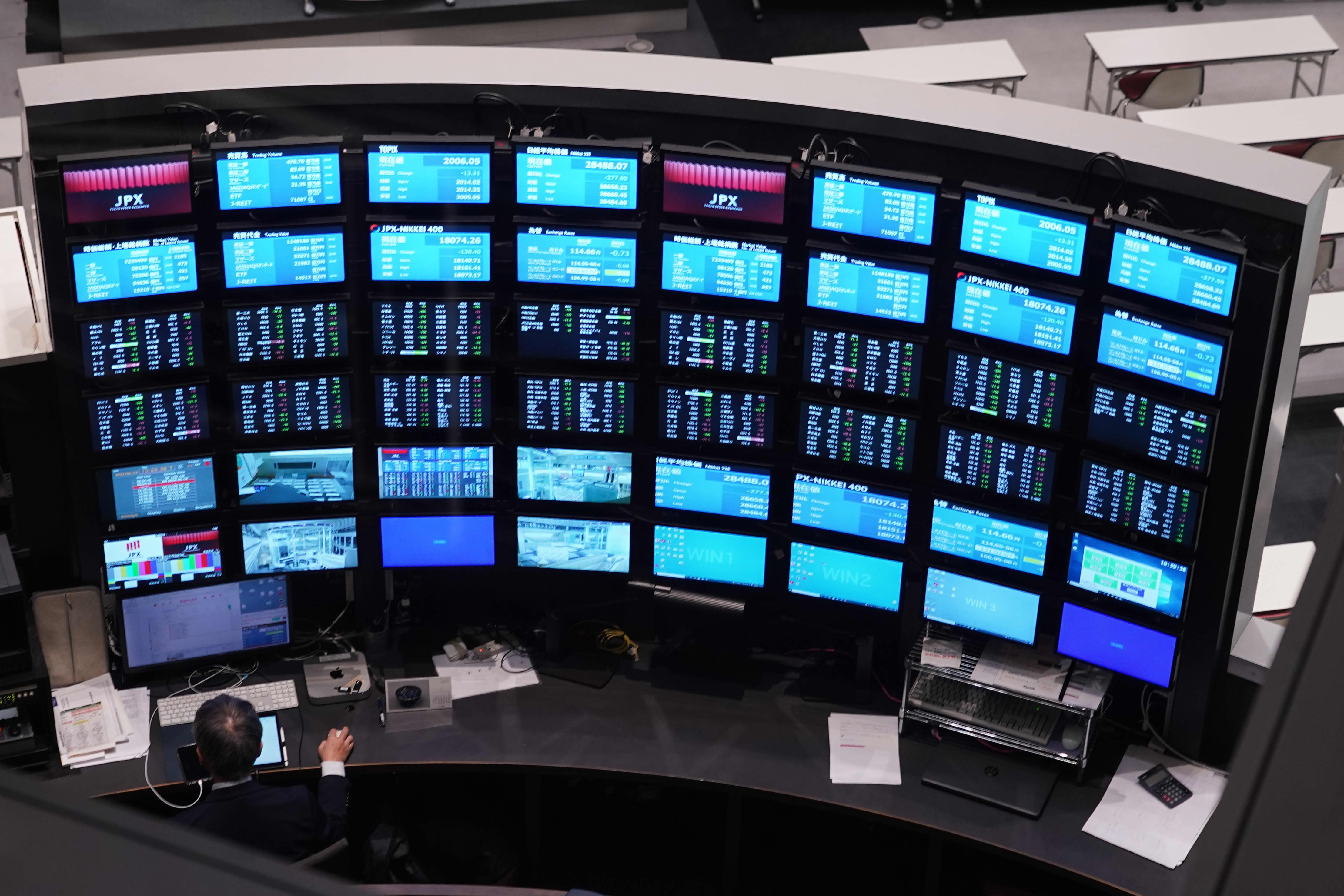
SINGAPORE — Shares in Asia-Pacific mostly slipped on Friday, as China did not lower interest rates despite analysts’ expectations for more stimulus.
Investor focus turned to mainland Chinese stocks, with many major markets in the region closed for the Good Friday holiday.
Mainland stocks have been under pressure for much of the past week, as China contends with the worst Covid outbreak since the start of the pandemic and as Shanghai remains under lockdown.
On Friday, China stocks struggled for direction but finally settled in negative territory by the close.
The Shanghai composite was down 0.45% to close at 3,211.24, and the Shenzhen component declined 0.56% to 11,648.57.
It underscores the reluctance of the central bank to aggressively ease policy. But we think it will have little choice but to do more before long.
Julian Evans-Pritchard
senior China economist, Capital Economics
“Chinese shares remained under pressure from concerns about covid related lockdowns,” said Shane Oliver, head of investment strategy and chief economist at Australian financial services firm AMP.
“China is continuing to have problems managing the Omicron wave resulting in lockdowns under its ‘zero covid’ policy (albeit it’s looking at softening some of its approach) threatening Chinese growth and contributing to further supply disruptions globally,” he said in an early Friday note.
Although investors were hoping for more policy support ahead, China on Friday held back on lowering rates. The People Bank of China left medium-term rates unchanged despite expectations for more stimulus given the Covid-induced slowdown.
“That’s somewhat surprising given the sharp economic downturn and recent calls from China’s leadership for monetary support. It underscores the reluctance of the central bank to aggressively ease policy. But we think it will have little choice but to do more before long,” said Julian Evans-Pritchard, senior China economist at Capital Economics.
Hong Kong markets are closed for the Good Friday holiday, as are Australia, Singapore, India and New Zealand.
In economic data, China released home prices data, which showed the country’s new residential prices stalling for a second straight month in March, according to Reuters. They rose 1.5% compared to a year ago, the slowest pace since November 2015.
In other markets, Japan’s Nikkei 225 closed down 0.29% to 27,093.19, while the Topix declined 0.62% to close at 1,896.31. Tech shares pared earlier losses, with SoftBank Group down 1.21%, and Sony tumbling 2.52%.
South Korea’s Kospi also dropped 0.76% to finish at 2,696.06.
We think there is scope for the 10-year Treasury yield to rise further over the next twelve months or so, with a peak only likely to come around the middle of next year.
Franziska Palmas
markets economist, Capital Economics
U.S. stocks fell Thursday, capping a losing week as investors digested mixed earnings results from major banks and rising inflation.
The S&P 500 fell 1.21% to 4,392.59, while the Nasdaq Composite lost 2.14% to 13,351.08. The Dow Jones Industrial Average lost 113.36 points, or 0.33%, to 34,451.23.
Inflation was in focus this week. U.S. Treasury yields climbed higher as inflation reports showed sharply rising prices, driving expectations of more aggressive Fed tightening. On Thursday, the benchmark 10-year U.S. Treasury yield rose to multiyear highs, climbing 13 basis points to top 2.8%.
“We think there is scope for the 10-year Treasury yield to rise further over the next twelve months or so, with a peak only likely to come around the middle of next year,” Franziska Palmas, markets economist at Capital Economics, said in a note.
She cited analysis of the 10-year Treasury yield during eight major Fed tightening cycles since the 1970s, which suggests that the current selloff “may have further to run.”
Currencies
The U.S. dollar index, which tracks the greenback against a basket of its peers, was at 100.543, regaining its strength to rise back above the 100 mark.
The Japanese yen traded at 126.64 per dollar, continuing to weaken. The Australian dollar continued to fall and was trading at $0.7403.
Source: CNBC
